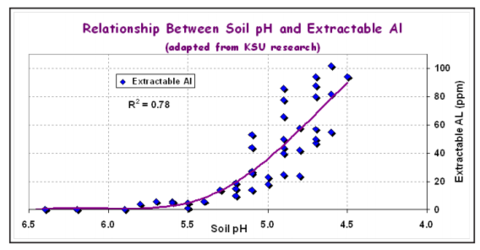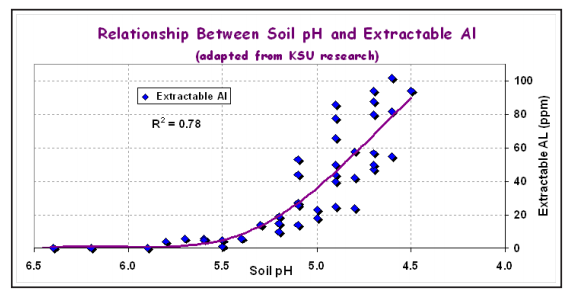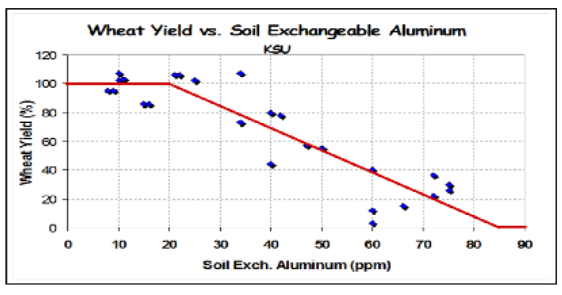The yield damaging effect of low soil pH on wheat growth and development is generally from aluminum toxicity. Aluminum toxicity in wheat reduces root development and causes roots to appear brown and stubby (Figure 5.1). Wheat also exhibits poor plant vigor, reduced leaf size, and thickened nodes (Figure 5.2).
As the soil pH falls below 5.5, the potential for aluminum-containing soil minerals to dissolve into soil solution in some parts of the field increases, and as soil pH falls below 5.0, soil solution aluminum levels increase dramatically. A soil with a pH of 4.5 contains 1000 times as much soluble aluminum as a similar soil having a pH of 5.5. It is this dramatic increase in aluminum levels at lower soil pH values that have caught many wheat producers off gaurd. While a wheat plant may appear relatively normal at a pH of 5.0, severe effects are noted at a pH 4.5, and complete crop failure usually results at a pH of about 4.0. Figures 5.3 and Figure 5.4 summarize research conducted by Kansas State University and illustrate how soil pH influences soil water aluminum (AI) concentration and how soil water AI concentration affects wheat grain yield.
Figure 5.3 Soil pH influences soil water AI concentration.

Figure 5.4 Influence of soil water AI concentration on wheat grain yield.

Soil acidity problems are very noticeable on wheat seedlings. Stunting and thickening of the roots will cause stunting of the plant due to the inability of the root system to provide adequate water and nutrients. Phosphorus deficiency and drought stress symptoms will typically be exhibited by the plant, even if phosphorus and water supplies seem adequate. The stunted plant will often have a flattened, prostrate appearance.

soil ph and water

